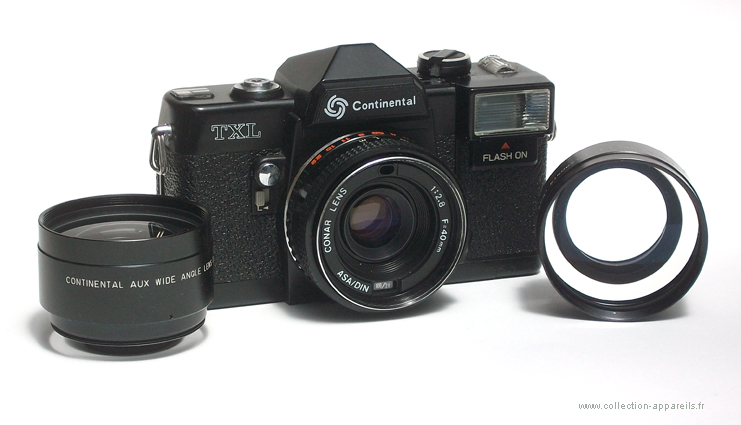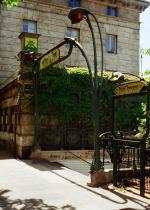|
Continental TXL |
Manufactured or assembled in Hong-Kong from (Circa) 1983 to (After) 1983.
Index of rarity in France: Rare (among non-specialized garage sales)
Inventory number: 8962
See the complete technical specifications
Chronology of cameras Continental
Continental was a small American distributor which sold mostly very inexpensive cameras from the 1950's until the 1980's. The Continental TXL was probably it's most ambitious project and it's last.
This camera is a copy of the Fujica ST-F; it's specifications, dimensions and weight are all nearly identical. It is one of several similar cameras made in Hong Kong in the early 1980's; the others include the Yumica RFX-1, Revue RFX-1 (Foto-Quelle?) and one of two Naigai SRFs. (Naigai was a Japanese distributor). These cameras have an exposure ring marked to F22.
Production moved to China in the late 1980's or early 1990's where the Great Wall PF-1 and the Aviva PF-1 were made. These lenses are marked to F16, and the fastest shutter speed is sometimes given as 1/370th. The name Great Wall and the prefix "PF" suggest that they might have been made by the Great Wall Plastic Factory. The names on the lenses are interchangeable, so they were probably all made by the same company.
Exposure is semi automatic, by rotating the aperture ring to give a green light in the viewfinder. (Each interval is a little more than 1.5EV) The meter is turned on by a button to the left of the lens. A second switch below it locks both the meter button and the shutter. The focus and aperture rings can be locked together for flash photography with a simple 'flashmatic' system.
In the 1970's Mamiya sold conversion lenses for its 528TL/AL series as a means of developing a new market. Fujica, Hanimex and Naigai did the same thing for their new mirror shutter cameras from about 1978-9, and Continental adopted the same strategy. The TXL was advertised in Popular Photography in March and May of 1983 with a Mamiya conversion lens set, an eye cup and a fancy neck strap for $119.95. The same store was also selling a generic conversion lens set for $49.95 on its own.
Continental sold two more conversion sets, one branded Continental and the other Conar, so they must have been reasonably popular. Both included a 4 diopter close-up lens giving focus at about 250 mm. The Continental set had elements which extended behind the filter thread, and were probably made specifically for the TXL. The Conar set did not, and could be used on any lens with a 49 mm filter thread. (of which there were many). Both allow a CdS meter to 'see' through them, and both were made in Japan. The 'bathroom tile test' suggests that they converted the 40 mm lens to about 30 mm (wide-angle) or 60 mm (telephoto).
The TXL and its later sisters had the advantages of low cost, smaller size, simple operation and a 'wider' standard lens than most SLR's. It had the disadvantages that shutter speed and aperture could not be set independently, there was no way of attaching a more powerful flash and there was no 'B' setting for low light photography. The conversion lenses were relatively light (85/125 grm), compact, cheap and suitable for occasional use.
Did Fuji have a hand in producing these cameras? Who made the lenses?


Interesting links or bibliography :
Add a link or element of bibliography, a picture taken with this camera, a picture of box or an ads about this camera
Your photos taken with the same camera:
Cameras from Ebay France (Continental) (Uploaded each 3 hours)








